"I haven't had a home for three years" says Iwan Baan
Interview: Iwan Baan is the rock star of architecture photography, shooting buildings from helicopters and "living in a hotel 365 days a year". With a new exhibition documenting his hectic schedule now open in Germany, Baan spoke to Dezeen about his unique lifestyle and technique (+ slideshow).
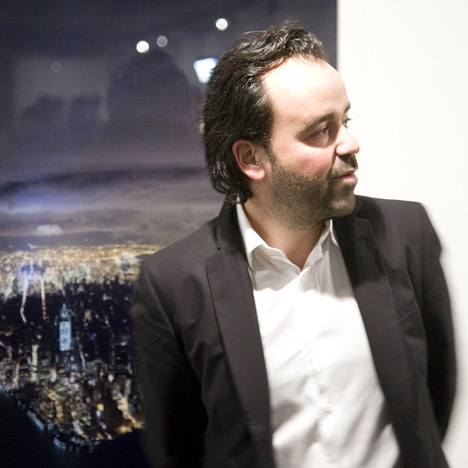
Iwan Baan started out as a documentary photographer but moved into architecture after a chance meeting with architect Rem Koolhaas. He has since become the most sought-after name in architectural photography and spends his life travelling the world to shoot buildings by names such as Zaha Hadid, Herzog & de Meuron and SANAA.
"It's continuous travelling," he said. "When you look on the map, it's flying back and forth all over the world."
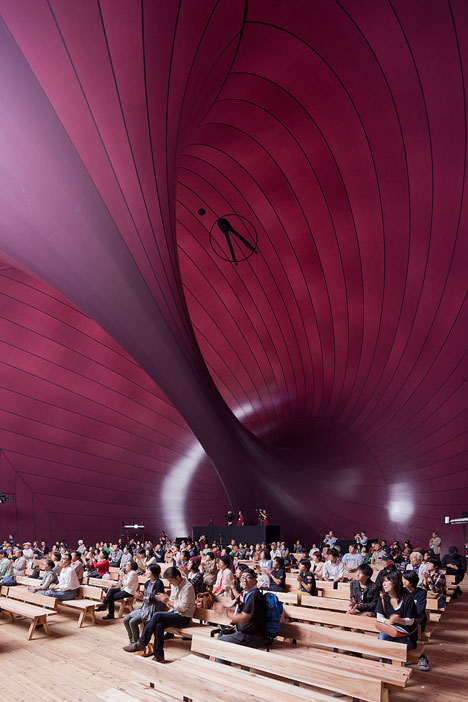
Baan is known for eschewing the traditional approach of shooting buildings in isolation. He says his aim with every shoot is to capture the life both within and surrounding the built environment. "It's still very much my interest to show what's happening around these buildings, what people do there and what kind of role these projects have for people," he explained.
For most shoots the photographer rents a helicopter to capture his subject from above. "It's very important for me to give the larger overview and try to get some distance from the architecture. That really tells you where it is and that it's not just a building that could be anywhere."
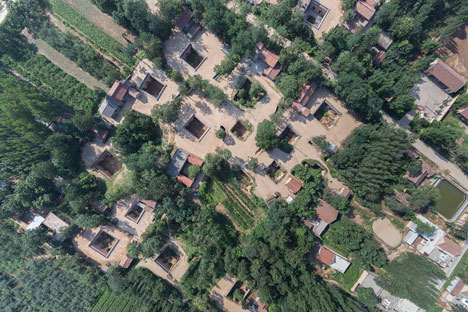
The new exhibition, entitled 52 Weeks, 52 Cities, shows a selection of Baan's photographs from the last year accompanied by short commentaries. "It's really a view into a year of travelling with Iwan," he said.
Subjects in the exhibition vary from glossy architectural projects to a settlement in Lagos where over 150,000 people live in self-built structures perched on stilts over a lagoon, a village in China where locals have excavated a network of underground caves to live inside, and a secretive Japanese shrine that is rebuilt every 20 years. It also includes the iconic shot of post-Sandy New York that threw the photographer into the limelight when it made the cover of New York Magazine in late 2012.
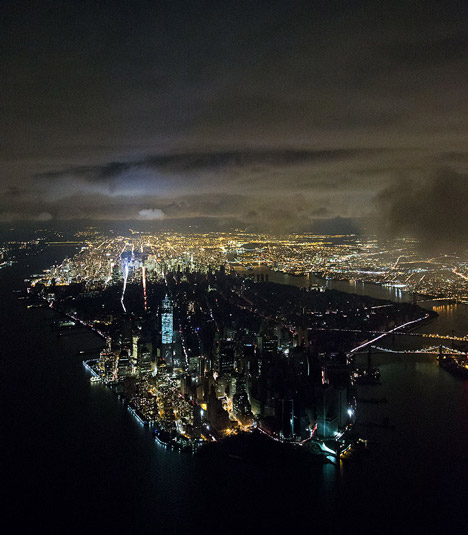
"Most people know my photography from the commissioned architecture work but there are also a lot of other places that fascinate me, that show how people are building informally. My work is about looking at all the different aspects of building and the built environment, from the very well-planned cities to what people build themselves out of necessity," he said.
52 Weeks, 52 Cities is on show at the Marta Hereford gallery in Hereford, Germany, until 30 March.
Here's a full transcript of the interview:
Amy Frearson: Your new exhibition is called 52 Weeks, 52 Cities. Are you on the road all the time, or do you get opportunities to go home?
Iwan Baan: I haven't had a home for almost three years. I live in a hotel basically 365 days a year.
Amy Frearson: Talk me through how you go about shooting a particular place. How many cameras do you tend to take on a typical shoot?
Iwan Baan: I always get an idea very quickly about how I want to document a space from an architectural point of view. I work very light and I usually only want one camera with me. I don't work with tripods or large cameras. It's really all about capturing the life of these places. That's what is important for me.
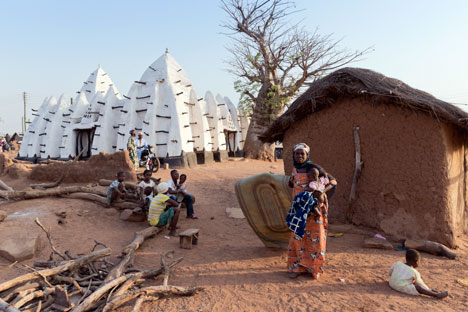
Amy Frearson: Do you try to shoot each project from the air?
Iwan Baan: More or less yes, it's part of my visual language of describing projects. It's very important for me to give the larger overview and try to get some distance from the architecture. Using a helicopter is always a good way to capture that kind of thing, and to give an architecture project its place in the city or landscape. That really tells you where it is and that it's not just a building that could be anywhere.
Amy Frearson: Do you do all your own post-production on your images whilst you're travelling?
Iwan Baan: Yes, but I do very little post-production on my images, usually only colour corrections, and I always do it right after the shoot.
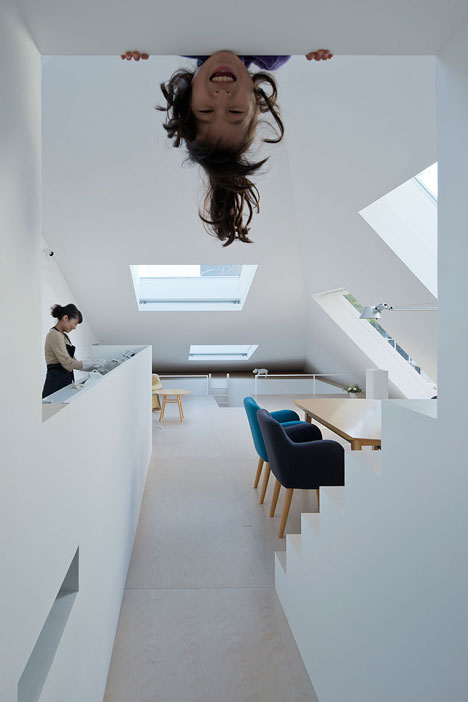
Amy Frearson: Most architectural photography tries to present the building in isolation but your photos often capture the social and urban context as well.
Iwan Baan: Yes that's very much the way that I take my commissions. They should be more than just architectural projects. They should be able to tell more about the story and the life around these buildings.
Amy Frearson: You didn't actually start out as an architectural photographer did you?
Iwan Baan: Yes that's right, I started out doing much more documentary photography. It was only eight years ago when I met Rem [Koolhaas] and fell into this whole architecture field. So it's still very much my interest to show what's happening around these buildings, what people do there and what kind of role these projects have for people. This exhibition tells that story by showing these unique areas and showing why these architecture projects are in these specific places.
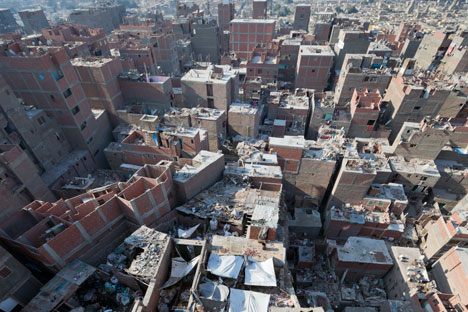
Amy Frearson: Tell me about the exhibition.
Iwan Baan: Marta Herford approached me about nine months ago or so. I had worked for Marta Herford before, about three ago years on an exhibition of all the Richard Neutra houses all over Europe, which I documented. I came back about nine months ago and they asked me if I was interested in doing another exhibition. I thought, with all my endless travels, it would be interesting to show a diary of my last year of travelling. Not only showing the new architecture, but also all the other things that happen around it. It's really a view into a year of travelling with Iwan.
Amy Frearson: Did you have an idea of what places you were going to be visiting across the year or did you work it out as you went along?
Iwan Baan: With my schedule, things always come up around a week before. It's continuous travelling. When you look on the map, it's flying back and forth all over the world.
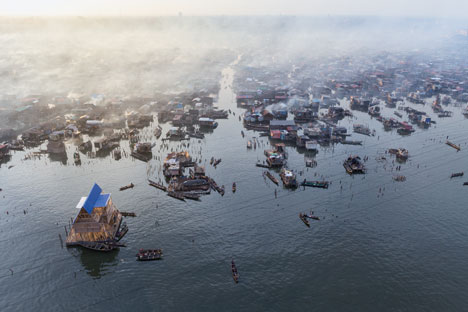
Amy Frearson: Tell me about some of the cities and places you've captured over the year.
Iwan Baan: Most people know my photography from the commissioned architecture work but there are also a lot of other places that fascinate me, that show how people are building informally. I'm really interested in how people build themselves unimaginable living conditions, for instance in the slums of Nigeria, or in Lagos where people have built this whole city in water, basically in a lagoon. My work is about looking at all the different aspects of building and the built environment, from the very well-planned cities to what people build themselves out of necessity.
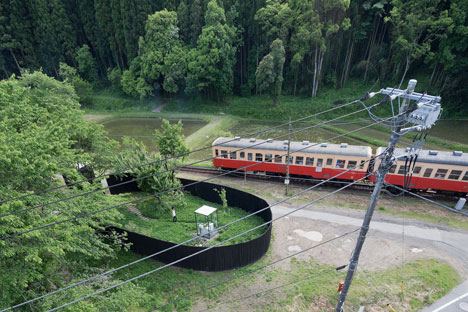
Amy Frearson: Is there an underlying theme that ties all the photographs together?
Iwan Baan: All the pictures are really about telling the stories of why a project is very specific for a place, whether they're very large, like a Zaha Hadid building in Azerbaijan that could only have been built there, to the tiniest project where I flew across the globe to Japan to photograph a toilet by Sou Fujimoto. I like telling these kinds of stories with my pictures.
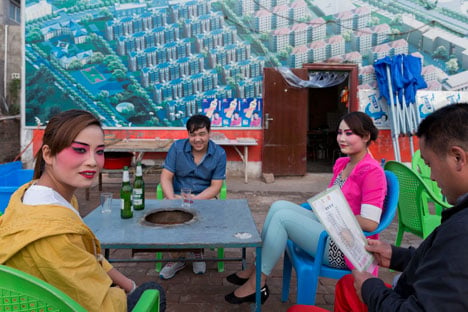
Amy Frearson: Do you have any favourite photographs in the exhibition?
Iwan Baan: That's hard to say, there are so many of these incredible places. One that comes to mind is of underground houses in China. It's a whole region in the centre north of China, around Xi'an, where for centuries people have dug out these courtyard houses that are basically carved out of the earth. They could only do it there because of the special earth, it's a kind of loose clay soil, so it's easy to dig it out. These people didn't have money to buy materials to build new houses, so for them the most logical step was to carve them out, since it is only manpower they needed to create these incredible houses.
At the most recent count, almost 40 million people live there. It's one of those things that is so specific for this area and reveals a lot about how people build and live in these places. These kinds of things always fascinate me.
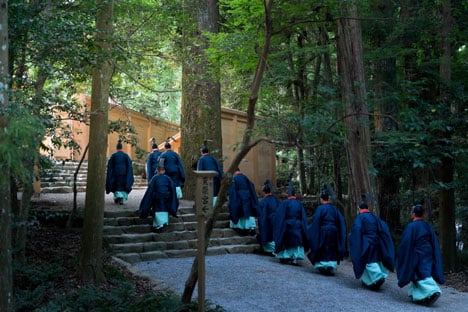
Amy Frearson: Can you describe some of the more historical places that you've photographed?
Iwan Baan: One place that comes to mind was a couple of months ago. It's the Ise Shrine in Japan. It's an incredible story of a series of shrines in a village in Japan. They started building the first shrines there in the year 600, and since then they have rebuilt the shrines every twenty years. There's this enormous tradition of craftsmanship, rebuilding all these frames every twenty years. I was very lucky to be there a couple of months ago during that whole rebuilding process and afterwards, when there were all these ceremonies there. So my pictures were really telling a story of this incredible architectural history, how people experience that, how people build it and how people have lived with it for 1400 years.
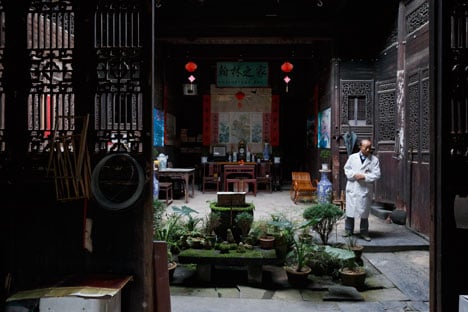
Amy Frearson: Did you find any of the places particularly challenging to shoot?
Iwan Baan: There's a place in China, a series of incredible courtyard houses in the Anhui Province where I was last year. From the outside, you come into a village which is completely closed off. It only has narrow roads and you can hardly see any of the architecture, so it's hard to document. When I came to this place I got a little frustrated about how I was going to shoot it, but then I found a doctor in a little village in the countryside and asked if I could tag along with him. I walked for two or three days with him and went to all these family houses. All the doors were open and I would step into all these incredible homes and was really able to photograph the life happening inside these places.
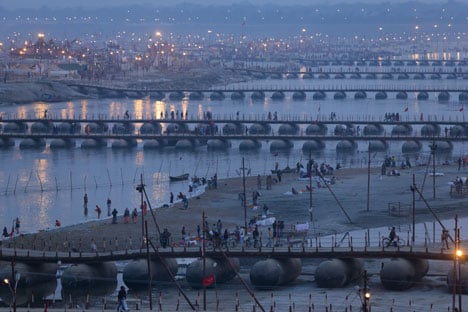
Amy Frearson: Can you tell me about any other countries you've been to?
Iwan Baan: Last January, I was with a whole team from Harvard University in India. There was an event that happens once every 12 years, it's called the Kumbh Mela. It happens in the north of India near Varanasi, where the Ganges and the Yamuna rivers come together. It's basically a big delta, but between December and April it's dry season there so the water level drops.
Once every 12 years the Indians organise a festival there and it's basically the largest human gathering in the world. Around 100 million people visit the site over a period of about a month and a half. It's in this river bed that has dried out, so this piece of land about the size of Manhattan becomes available. They literally build a pop-up mega city for 100 million people there, including all the infrastructure. They build roads, they make electricity and there's this whole city made out of bamboo sticks, saris and curtains. A city for 100 million people and after two months it disappears again.